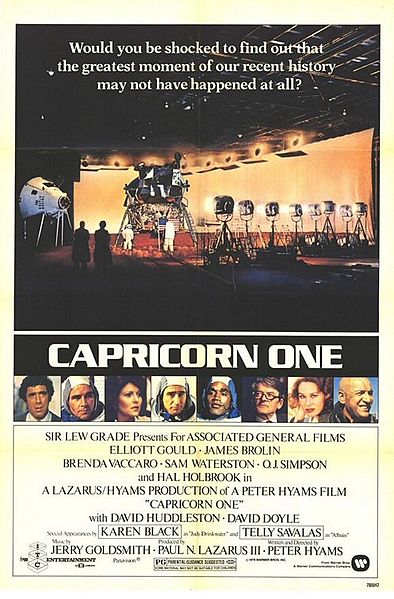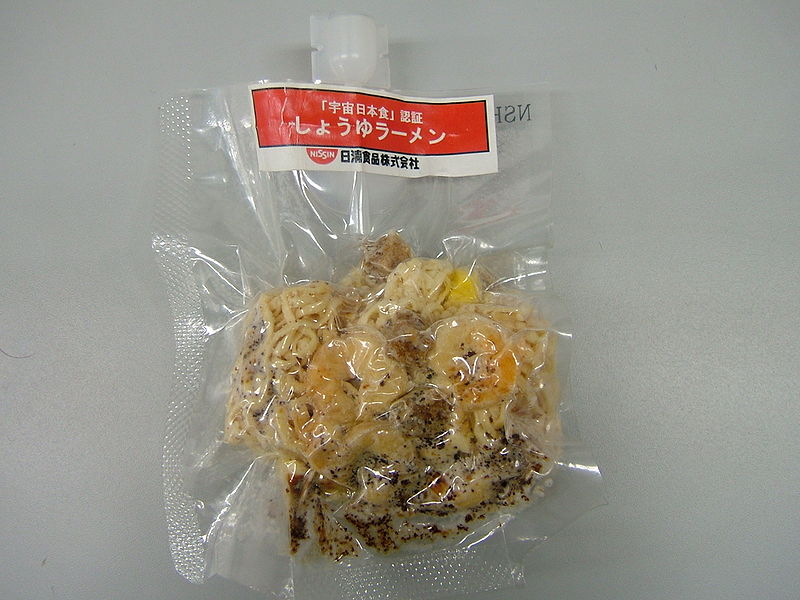I recently read that 20% of Americans don’t believe we really landed on the moon in 1969. Apparently, the conspiracy theory has gained steam over time—why haven’t we returned since the Apollo missions? How can that American flag wave in a windless environment? And who believes anything Tricky Dick says, anyway?
Okay, sure. And Elvis is still alive and chowing down at a Burger King in my hometown of Kalamazoo, MI.
To avoid claims of conspiracy theories as government masterminded hoaxes, I prefer it when fake astronauts admit their mission is a fake one.
A six-person crew, chosen for their “astronaut like qualities” (ability to do push-ups in near zero gravity?) are undertaking a four-month mission in which they’re living in a dome on a Hawaiian volcano to simulate a Mars mission.
If this sounds like science fiction to you, you’re not wrong.
Capricorn One, released in 1978, combines elements of the Mars simulation mission and the moon landing conspiracy theories to tell the story of a Mars landing hoax. What’s even stranger is that one of the astronauts in the film is played by none other than O.J. Simpson, who apparently was getting some good practice at perpetrating falsehoods.
The film’s premise sounds fairly plausible: humans are finally on the way to Mars (perhaps using one of those Star Trek deflector shields to stave off the radiation) when, during the final launch paid preparations, NASA realizes that a defective life support system will kill the astronauts in flight. But, in a case of art imitating life, they know they need to continue—the manned space program needs it. So they fake the landing, spiriting the astronauts away to an army space as the spacecraft launches, empty unbeknownst to the public. The astronauts are ultimately compelled to go along with the hoax, buying into the patriotic duty argument. And, as you can imagine, the situation goes downhill from there. We’ve got blackmail and coercion, imprisonment, manipulation, mysterious disappearances, etc. And no, the astronauts never made it to the Kalamazoo Burger King.
But a fake mission that touts itself all along as fake is a totally different story. It might not be a sci-fi thriller, but it’s still got plenty of science. The Hawaiian space Exploration Analog and Simulation (HI-SEAS) mission primarily exists to study astronaut food options for long missions, such as a mission to Mars.
Space food is nasty—it’s just true. While it might seem momentarily neat to try and reconstitute freeze dried food or squeeze it light toothpaste from a tube (space food from a tube has been abandoned, given its grossness and the weight of the tube), astronauts generally don’t love their cosmic culinary options, and on most space trips, astronauts lose weight. On a long-haul mission to Mars, the effects of such dietary restrictions aren’t healthy or sustainable.
In other words, if we’re going to put people on Mars, we need to be able to feed them something other than Tang. In addition to confining themselves in a dome (and wearing mock spacesuits if/when they leave), the HI-SEAS crew dines on various types of experimental space food and monitors the results.
Space food has improved for the better—the Japanese, for example, have produced space ramen and even sushi. Russian crews on the International Space Station have about 300 menu items available to them. Korean astronauts even sampled a space-version of kimchi, which took researchers many years and millions of dollars to figure out how to make.
The benefit of Mars is that because of its gravity (about 1/3rd of Earth’s), it’s possible to actually cook food there. The HI-SEAS astronauts are testing out some possible Mars voyage staples, such as dehydrated broccoli, rice, and Spam. They hope to figure out how to bake bread and “make crab cakes” on Mars. Whatever they bring, they’d better choose wisely—it costs about $10,000 per pound to bring food (or anything else) into space. And since a Mars trip could take 150-300 days each way, the food has to last.
Reports from HI-SEAS indicate that they’ve been eating “Russian cabbage pie, Puerto Rican arroz con pollo, Moroccan beef tagine, homemade vanilla ice cream, a Tibetan porridge made of milled, roasted barley, and cheese and broccoli omelets.” Tangfastic! When they’re not cooking, they’re devising new recipes.
The HI-SEAS mission is also training its crew for another crucial part of a space operation: blogging and facebooking. Because everything we read on the internets is real!




